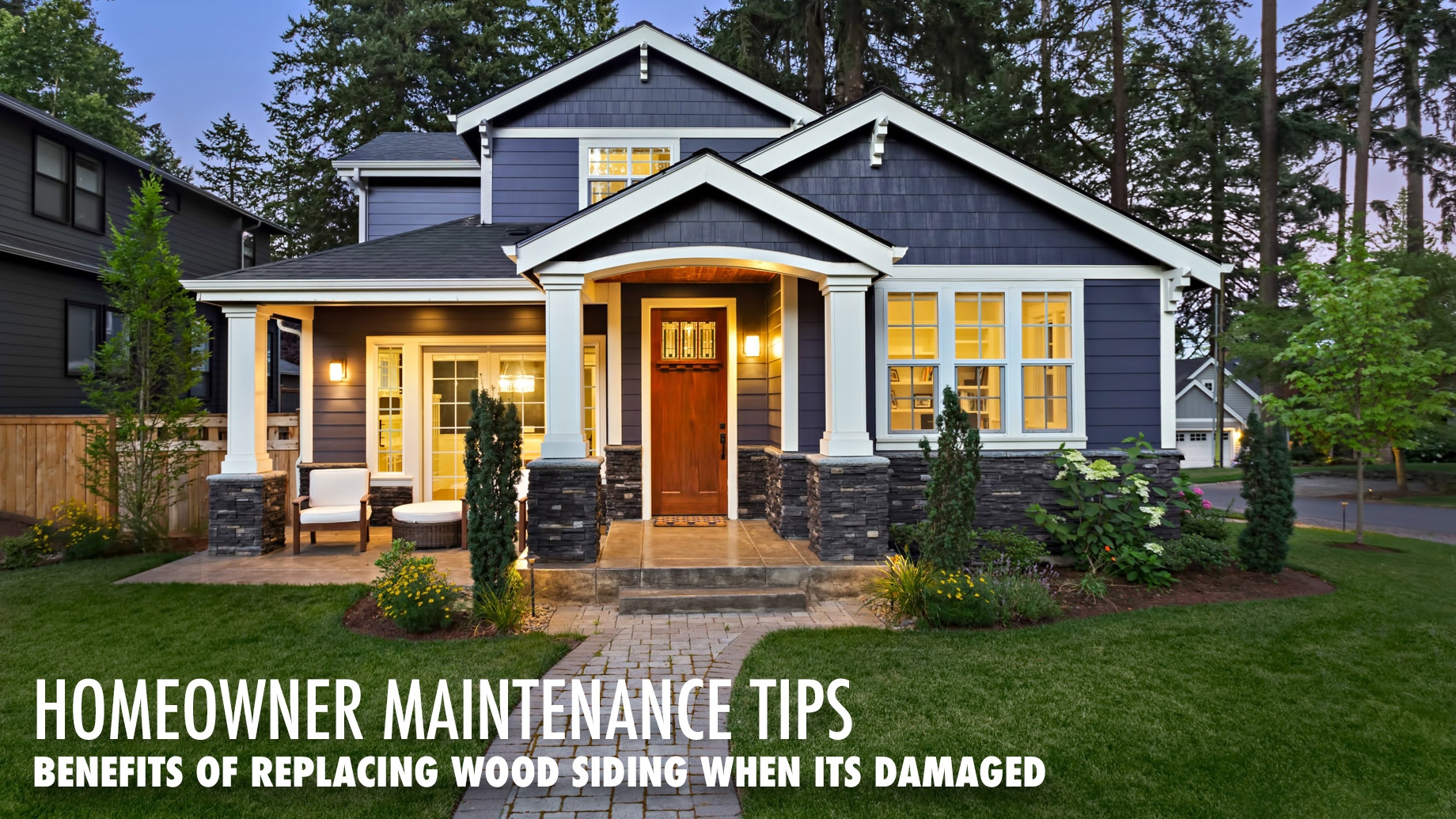
Siding is one of the essential features that a home should possess. Its primary purpose is to protect the home from wind, snow, rain, and weather conditions that could potentially damage your house. It also ensures that the foundation and contents of your home will remain safe and sound during any phenomenon. Since sidings, especially wood sidings, are meant to protect, they’re always exposed and are susceptible to rapid wear and tear. These will eventually need replacement. To make sure that you’re making the most out of your expenses, replacing wood siding with another one is an excellent option. But what exactly are the benefits of replacing your wood siding when it’s damaged?
Stronger Build and Protection
Generally, siding is installed on different exterior parts of a house to protect it from external damage. Therefore, damaged wood siding won’t perform as excellently as a new one. Replacing your old and damaged wood siding offers a stronger build and protection of both the exterior and interior parts of your home.
Moreover, damaged siding can cause further complications in your house. For instance, siding that has cracks or holes are vulnerable to leaks, especially wood, which easily gets damaged and rotten. Once holes and cracks exist on your siding, there’s a high possibility that the water will run to the walls of your home, making them more vulnerable to damage. Basically, a new home siding guarantees perfect protection for your house without any worries.
Wood siding isn’t only effective in terms of performance, but the materials used to build it are environmentally-friendly. Nowadays, more people, organizations, and institutions are going green to preserve sustainability during home maintenance and property renovations. Damaged wood siding that have been disposed of will decay after a long time, so it doesn’t contribute to non-biodegradable materials that end up in landfills and oceans for thousands of years. Also, wood used in siding require less energy when manufactured compared with other material options that need more energy and emit harmful greenhouse gases.
Restores Energy-Efficiency
Once your old wood siding is removed, you’ll have the opportunity to renovate your exterior walls and ceiling more conveniently. For old, vintage houses, it’s advantageous to consider renovating your walls and ceilings by adding or enhancing insulation. Before, home insulation was expensive so homeowners with tight budgets tend to minimize their construction costs and choose not to add insulation. Without insulation, however, a home is missing quite a few important things.
From a broader perspective, home insulation is more cost-effective than not having any at all. During summer, non-insulated walls tend to heat up faster than insulated ones, thus making the interior of the house hotter. Hot and humid conditions encourage homeowners to set their cooling systems at max, leading to higher electricity expenses. The same scenario happens during winter, where homeowners will require higher heating systems as heat easily escapes from their non-insulated walls.
Furthermore, you can also add insulation to your walls itself through blown-in insulation. To successfully insulate your siding, the installer will start puncturing holes in the area where insulation will take place. Then, they will insert a tube that will transport the insulation into your wall, filling the cavity with cellulose, fiberglass, and mineral wool.
New Aesthetic Appeal
Old wood siding looks less appealing due to its worn out appearance and texture, discoloration, and even noticeable cracks. Through installing new wood siding, your home will look renewed and enhanced with this simple replacement. This can increase your home’s comfort, functionality, and appeal. This is also applicable to the exterior features of your home, which are responsible for separating you from outdoor conditions.
To further increase its aesthetic appeal, you can add a pop of colour into the wood siding that matches the overall theme of your home. It will not only make the appearance more attractive, but your home will look more expensive as well.
Boosts Property Value
Having strong and high-quality wood siding in your home boosts the value of your property, which is advantageous when you’re planning to sell your home after a few years. Wood siding is a feature that can enhance your home’s curb appeal, which leads to greater property value that attracts more buyers.
Since wood siding ages quicker than other types of materials, it will be more prone to rotting, deterioration, and discoloration, which can deter customers considerably. Through replacing your wood siding with new profiles, textures, and colors, it will open an opportunity for your home to boost its value in terms of architectural advantages. While considering to replace your wood siding, you might as well replace other exterior parts of your home that will affect its curb appeal, such as gutters and shutters.
Conclusion
Wood siding offers numerous advantages to your home. It may seem like a costly and demanding project but the benefits it presents such as guaranteed protection, energy efficiency, aesthetic appeal, and property value, prove that wood siding is a worthwhile investment for every homeowner.